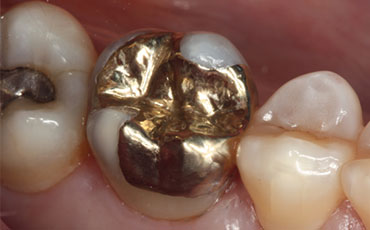WHITE FILLINGS (COMPOSITE FILLINGS)

Composite restoration have a natural, tooth-like appearance and are used primarily on anterior teeth, although many patients now prefer to have composite fillings placed on posterior teeth. Two major advantages of this type of restoration is that it bonds to the tooth and it matches the tooth colour giving an aesthetically pleasing result.
SILVER (AMALGAM) FILLINGS

Amalgams are commonly known as silver fillings. They do contain some silver and small amount of mercury; however, they are a mixture (or alloy) of metals that are bound together, or in other words, amalgamated. Amalgam fillings have been used for many years and are often the preferred treatment for posterior fillings due to its strength.
INLAYS

When an inlay is used, the tooth-to-restoration margin may be finished and polished to a very fine line of contact to minimize recurrent decay. Opposed to this, direct composite filling pastes shrink a few percent in volume during hardening. This can lead to shrinkage stress and rarely to marginal gaps and failure. Although improvements of the composite resins could be achieved in the last years, solid inlays do exclude this problem. Another advantage of inlays over direct fillings is that there is almost no limitations in the choice of material. While inlays might be ten times the price of direct restorations, it is often expected that inlays are superior in terms of resistance to occlusal forces, protection against recurrent decay, precision of fabrication, marginal integrity, proper contouring for gingival (tissue) health, and ease of cleansing offers. However, this might be only the case for gold.
ONLAYS

When decay or fracture incorporate areas of a tooth that make amalgam or composite restorations inadequate, such as cuspal fracture or remaining tooth structure that undermines perimeter walls of a tooth, an onlay might be indicated. Similar to an inlay, an onlay is an indirect restoration which incorporates a cusp or cusps by covering or onlaying the missing cusps. All of the benefits of an inlay are present in the onlay restoration. The onlay allows for conservation of tooth structure when the only alternative is to totally eliminate cusps and perimeter walls for restoration with a crown. Just as inlays, onlays are fabricated outside of the mouth and are typically made out of gold or porcelain. Gold restorations have been around for many years and have an excellent track record.